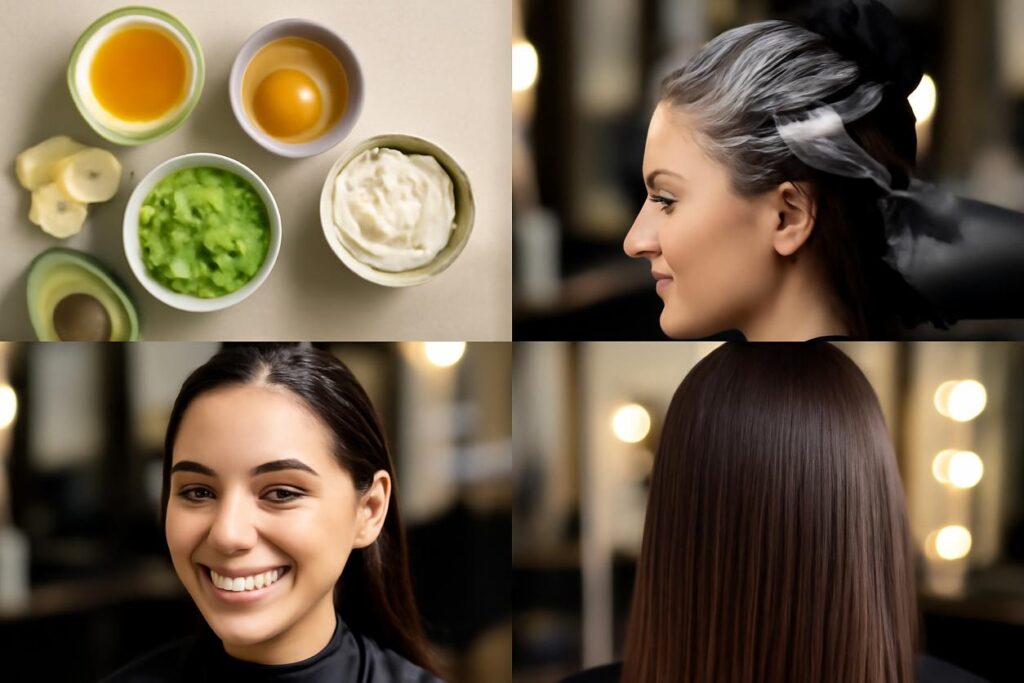Table of Contents
- Quick Summary: What This Guide Delivers
- How Split Ends Form: Hair Structure Explained Simply
- Common and Surprising Causes of Split Ends
- Spotting the Earliest Signs Before Damage Spreads
- Daily Habits That Protect Hair Tips
- Weekly and Monthly Maintenance Routine
- Styling Swaps: Low-Damage Looks and Product Choices
- Nutrition and Lifestyle Changes That Support Hair Integrity
- When a Trim Is the Right Move vs. Temporary Fixes
- Troubleshooting Flowchart: Stubborn Split Ends and Next Steps
- At-Home Quick Remedies to Reduce Appearance Between Trims
- Resource List and Evidence Links for Curious Readers
- Printable Checklist and Weekly Planner
Quick Summary: What This Guide Delivers
Welcome to your complete blueprint for split ends prevention. Forget temporary fixes and confusing advice. This guide provides a science-backed, practical framework for achieving long-term hair health from the inside out. We’ll break down the real causes of split ends, establish simple daily and weekly routines, and offer a clear troubleshooting plan for when your hair needs extra help. This is your go-to resource for building resilient, healthy hair that resists damage, designed for busy people who want real, measurable results.
How Split Ends Form: Hair Structure Explained Simply
Understanding how to prevent split ends starts with understanding your hair’s structure. Think of a single hair strand like a rope made of three layers. The outer layer, the cuticle, is like overlapping scales or shingles on a roof. Its job is to protect the inner layers. The middle layer, the cortex, provides the hair’s strength, color, and texture. The innermost layer is the medulla.
When hair is damaged, the protective cuticle scales lift, chip away, and eventually break off. This exposes the delicate cortex, which is made of long, fibrous keratin bundles. Without its outer shield, the cortex begins to unravel and fray, much like the end of a rope. This fraying is what we see as a split end, or trichoptilosis. Effective split ends prevention is all about keeping that outer cuticle layer smooth, sealed, and intact.
Common and Surprising Causes of Split Ends
Split ends are the result of cumulative damage. While some causes are well-known, others are surprisingly common in daily routines. Identifying these is the first step in your split ends prevention journey.
- Mechanical Damage: This is the most common culprit. It includes aggressive brushing, towel-drying with rough cotton towels, and friction from clothing, pillowcases, or tight hairstyles with harsh elastics.
- Heat Damage: Using styling tools like flat irons, curling wands, and blow dryers at high temperatures boils the water within the hair strand, creating damaging steam bubbles and cracking the cuticle.
- Chemical Damage: Treatments like bleaching, coloring, perms, and relaxers alter the hair’s structure, weakening the protein bonds and leaving the cuticle porous and vulnerable.
- Environmental Stressors: Sun exposure (UV radiation), wind, dry air, and pollution can all degrade the hair’s protective layers over time.
- Lack of Moisture: Dry hair is brittle hair. When your strands lack moisture and lipids, they lose their elasticity and are far more prone to snapping and splitting.
Spotting the Earliest Signs Before Damage Spreads
Catching damage early makes split ends prevention much more effective. Before you see a full-blown “Y” split, your hair sends out warning signals. Look for these early signs:
- Rough Texture: Run your fingers down a strand of hair. If the last few inches feel significantly rougher or drier than the hair closer to your scalp, the cuticle is likely raised and compromised.
- Single Strand Knots: Often seen in curly and coily hair types, these tiny knots (or fairy knots) cause a weak point in the hair shaft that can easily lead to breakage.
- Lack of Shine: Healthy hair has a smooth, flat cuticle that reflects light. Damaged, raised cuticles scatter light, making hair appear dull and lifeless.
- Tangles and Snags: If your ends are constantly tangling, it’s a sign that the raised cuticles are snagging on each other instead of gliding smoothly.
- The Mini-Split: Look closely at your ends in good light. You may see a small, developing split or a white dot at the tip of the hair shaft, which is a precursor to a full break.
Daily Habits That Protect Hair Tips
Your daily routine has the biggest impact on your hair’s health. Incorporating these simple habits is the foundation of successful split ends prevention.
Gentle Cleansing & Drying Techniques
How you wash and dry your hair matters immensely. Over-washing can strip natural oils, while aggressive drying creates friction.
- Wash with lukewarm water, as hot water can lift the cuticle.
- Focus shampoo on the scalp, where oil and buildup accumulate. Let the suds gently run down the lengths as you rinse.
- Always follow with a conditioner, concentrating it on the mid-lengths and ends to replenish moisture and smooth the cuticle.
- Instead of rubbing your hair with a rough cotton towel, gently squeeze or blot out excess water with a microfiber towel or an old t-shirt.
Brushing and Detangling Best Practices
Never attack knots from the root down. This stretches and snaps the hair where it’s most fragile.
- Start from the bottom up. Hold a section of your hair and gently brush or comb through the last few inches first. Once the ends are detangled, move up a few inches and repeat, until you can smoothly brush from roots to tips.
- Use the right tool. A wide-tooth comb is best for detangling wet hair, which is at its most elastic and fragile state. For dry hair, a brush with flexible bristles can be effective.
- Never brush aggressively. If you hit a snag, stop and gently work it out with your fingers or the end of a comb.
Heat Styling Alternatives and Safe Temperature Rules
Reducing heat is a game-changer for split ends prevention. For your 2025 hair goals, prioritize heat-free methods.
- Embrace heatless styles: Experiment with braids, twists, and heatless curling rods to create texture without the damage.
- When using heat, protect your hair: Always apply a heat protectant spray to create a barrier between your hair and the hot tool.
- Follow temperature rules: There’s rarely a need for maximum heat settings. Keep tools below 365°F (185°C) for most hair types. Fine or color-treated hair should stay even lower, around 300°F (150°C).
Weekly and Monthly Maintenance Routine
Consistency is key. A dedicated weekly and monthly routine reinforces your daily efforts and provides the deep nourishment your ends crave.
- Weekly Deep Condition: Once a week, swap your regular conditioner for a deep conditioner or hair mask. Apply it to your ends, leave it on for 15-30 minutes (you can wrap your hair in a warm towel to help it penetrate), and rinse thoroughly. This replenishes lost moisture and lipids.
- Monthly Clarifying Treatment (If Needed): If you use a lot of styling products, a gentle clarifying shampoo once a month can remove buildup that prevents moisturizing ingredients from penetrating the hair shaft. Always follow up with a deep conditioning treatment.
Styling Swaps: Low-Damage Looks and Product Choices
Certain hairstyles and accessories can put constant strain on your hair. Making smart swaps can dramatically reduce breakage and support your split ends prevention plan.
- Ditch Tight Elastics: Traditional hair ties with metal clasps can snag and break hair. Switch to gentle options like silk or satin scrunchies, spiral hair ties, or claw clips.
- Vary Your Hairstyle: Wearing the same tight ponytail or bun every day puts stress on the same spot. Mix it up with loose braids, low ponytails, and styles that don’t pull on your hairline or ends.
- Sleep Smart: Friction against a cotton pillowcase can rough up the hair cuticle overnight. Switching to a silk or satin pillowcase reduces this friction, helping to keep hair smooth. A loose braid or pineapple hairstyle can also protect ends while you sleep.
Nutrition and Lifestyle Changes That Support Hair Integrity
Healthy hair starts from within. What you eat and how you live directly affects the quality and strength of the hair your body produces. True split ends prevention is a holistic effort.
- Protein is Paramount: Your hair is primarily made of a protein called keratin. Ensure your diet includes adequate protein from sources like lean meats, fish, eggs, legumes, and tofu.
- Incorporate Key Micronutrients: Iron, zinc, biotin (Vitamin B7), and Vitamin C are crucial for hair growth and strength. Find them in leafy greens, nuts, seeds, and fruits.
- Healthy Fats are Essential: Omega-3 fatty acids, found in fatty fish, flaxseeds, and walnuts, help nourish hair follicles and add shine and elasticity to your strands.
- Stay Hydrated: Dehydration can impact your hair just as it does your skin. Drink plenty of water throughout the day to support overall health, including that of your hair.
For more detailed guidance on hair health, you can review resources from the British Association of Dermatologists.
When a Trim Is the Right Move vs. Temporary Fixes
Here is a crucial truth in hair care: you cannot permanently repair a split end. Once the hair shaft has split, the damage is done. Products marketed as “split end menders” work by temporarily gluing or sealing the split pieces together with polymers or silicones. This can improve the appearance and prevent further immediate fraying, but the effect washes out.
The only real solution for a split end is to cut it off. A regular trim (or “dusting,” where only a tiny amount is taken off the ends) is the most critical part of any split ends prevention strategy. It removes the damaged portion before it can travel further up the hair shaft, which would require more length to be cut off later. Aim for a small trim every 8-12 weeks, even if you are trying to grow your hair long.
Troubleshooting Flowchart: Stubborn Split Ends and Next Steps
If you’re still struggling despite your best efforts, this flowchart can help you identify potential weak spots in your routine.
| Symptom | Potential Cause | Next Step for Split Ends Prevention |
|---|---|---|
| Ends feel dry and brittle despite regular conditioning. | Product buildup preventing moisture absorption, or lack of deep conditioning. | Try a clarifying shampoo (once a month) and ensure you are using a weekly deep conditioning mask. |
| Noticeable breakage around where you tie your hair. | Hairstyle is too tight or using harsh hair ties. | Switch to silk/satin scrunchies or spiral ties. Vary the placement of your ponytail or bun daily. |
| Hair seems dull, and splits appear quickly after a trim. | Possible heat damage or nutritional deficiency. | Lower the temperature on heat tools and always use a protectant. Review your diet for protein and key vitamins. |
| Ends feel rough and snag easily, especially after sleeping. | Friction from cotton pillowcases. | Switch to a silk or satin pillowcase and/or loosely braid your hair before bed. |
At-Home Quick Remedies to Reduce Appearance Between Trims
While a trim is the only cure, you can temporarily improve the look and feel of damaged ends. These remedies work by smoothing the cuticle and adding moisture, which camouflages the appearance of splits.
- Use a Lightweight Hair Oil: Apply one or two drops of a lightweight oil (like argan or jojoba oil) to your palms, rub them together, and gently smooth over the bottom few inches of your dry hair. This adds shine and tames frizz.
- Apply a Leave-In Conditioner: A good leave-in conditioner can add a layer of protection and moisture to your ends, making them feel softer and look healthier throughout the day.
- Try a Sealing Serum: Products with silicones can effectively “glue” split ends together temporarily, creating a smooth finish. This is a purely cosmetic fix but can be helpful for a special occasion.
Resource List and Evidence Links for Curious Readers
For those who want to dive deeper into the science of hair care, these resources provide evidence-based information.
- Rich Hair UK – Split Ends Resource: A comprehensive guide that explores the causes and treatments for split ends in great detail.
- Hair Anatomy Overview – NCBI: A scientific paper from the National Center for Biotechnology Information detailing the complex structure of the human hair follicle and shaft.
- British Association of Dermatologists – Hair Care Guidance: Expert advice on general hair care and conditions from leading dermatologists.
Printable Checklist and Weekly Planner
Use this simple planner to stay on track with your split ends prevention routine. Consistency is your most powerful tool.
| Day / Frequency | Hair Care Task | Notes |
|---|---|---|
| Daily | Gentle detangling (ends to roots); Protect hair while sleeping (loose braid/satin pillowcase). | Check for knots before brushing. |
| Wash Day (2-3x a week) | Lukewarm water; Shampoo scalp only; Condition mid-lengths to ends; Blot dry with microfiber towel. | Use a wide-tooth comb to detangle with conditioner in. |
| Once a Week | Apply a deep conditioner or hair mask for 20-30 minutes. | Pick a consistent day, like Sunday, to make it a ritual. |
| As Needed | Use minimal heat styling; Always apply heat protectant first. | Focus on heat-free styles for your 2025 hair goals. |
| Every 8-12 Weeks | Schedule a trim or “dusting” to remove damaged ends. | This is non-negotiable for long-term health! |






